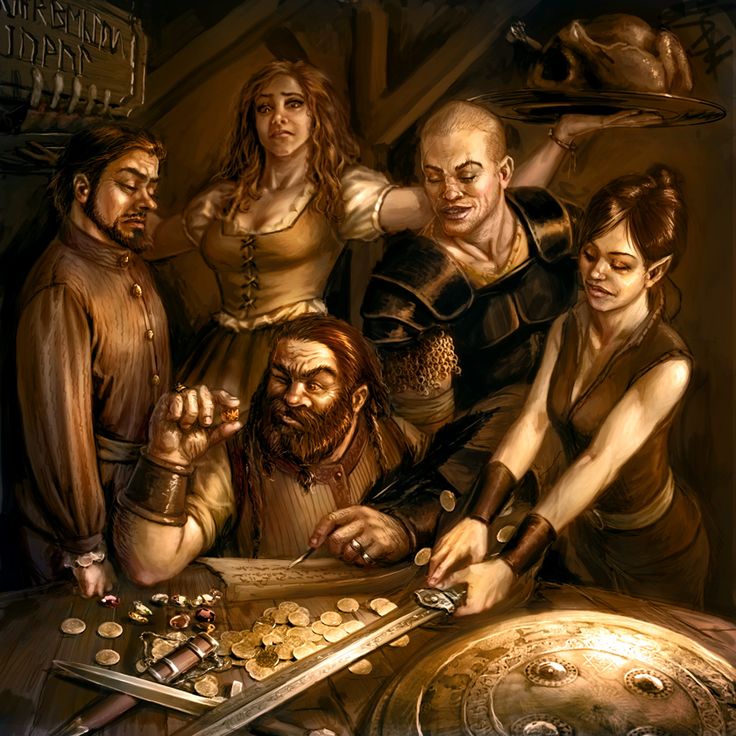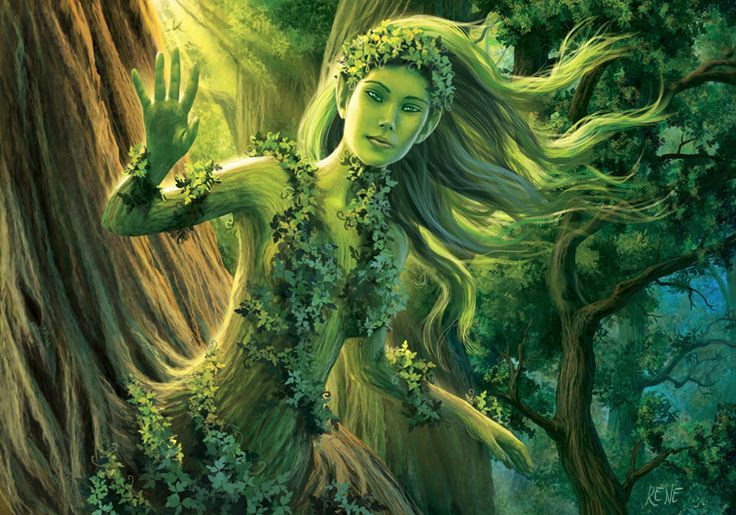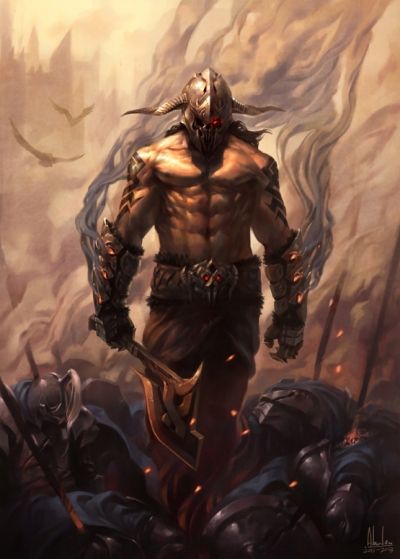Difference between revisions of "Races"
(Pushed from realm.) |
(Pushed from realm.) |
||
| Line 90: | Line 90: | ||
|[[Tieflings|Tieflings]] | |[[Tieflings|Tieflings]] | ||
|Rare | |Rare | ||
| − | |[[ | + | |[[The Void]] |
|- | |- | ||
|} | |} | ||
Revision as of 20:32, 15 October 2021
The Realm is a place of great diversity populated with every imaginable being from common peasants to strange, alien monsters. Most adventurers are drawn from the core races common to the Reaches. Uncommon race adventurers exist, but they face special challenges as outsiders - almost always drawing the attention of the local populace. Rare races rarely, if ever, join in adventuring parties.
Humans are, by far, the most common race in the Reaches. They can be found in almost every land and profession - from farmers of the vast plains to merchants on the Great Sea to woodsmen of the forests. Humans are some of the most powerful figures in the history of the Reaches. Also common to the Reaches are the two elder races. The elves are the great caretakers of the forest and land. In contrast, the dwarves are great miners and craftsmen of the mountains. Other common races include the "wee" folk - gnomes and hobbits. Gnomes tend towards magic and mechanical expertise preferring solitude in the marshes and swamps of the Reaches. Hobbits are farmers and hunters in the forest meadows and out-of-the-way pastures in the land. Finally, orcs from the north are found in the cities and towns of the Reaches working as adventurers - oftentimes as fighters, guards and hired muscle.
Uncommon races include goblins - tinkerers and spellcasters of the orcish clans that can sometimes be found in adventuring parties. Since the First Age, merchant ships have plied their trade across the Great Sea. The nimble ratfolk of the Tang Empire are the most powerful and accomplished sailors ever to set sail. While uncommon, a few ratfolk can be found in other occupations throughout the coastal towns and cities of the Reaches. More distrusted are the lizardfolk and kobolds from the Forbidden Lands far to the south. While common in the other lands of the Realm, lizardfolk and kobolds are uncommon in the Reaches.
Rarely found in the Reaches, the lost dwarves of the House of Calin are sometimes found in the smithys and forges in Teufeldorf. Likewise, the reclusive dark elves are almost never seen openly in the Reaches, although their missions from Dor Daeolith sometimes take them to the dark alleyways of the Western Reaches. To the east, the dhampir and werefolk of the Wolfshaunt have become more common in the Eastern Reaches of late. Finally, the demon-spawn tieflings - lost and without a homeland for centuries after coming from the Void - have been seen on the fringes of society.
The Realm is filled with other races - the great eagles of the Eyrie, the reclusive fey of the deep woods, the undead of the Tomb Kingdom, the dragons of the Wyrmwyld, and the merfolk and other aquatic races of the seas - to name a few. Other "monstrous" societies can be found tucked into the mountain crags and deep forest glens of the Realm. These small, isolated societies weave the very fabric of the land, but their members do not adventure in the Reaches. Most are reclusive by nature and hostile to any incursions into their domains.
The adventuring races in the Reaches are listed below.
|
NOTE: Outside the seven core Savage Pathfinder races, House Rules will need to be created to cover the other races - just ask your DM for full details.
The Fey
Before elves, dwarves, dragons, or humans made their mark on the Realm, the verdant forests of the world were the domain of the fey. This was a time before cities and civilization, when forests covered most of the continents and life followed the natural order.
Of the fey, the ents are the oldest creatures in the Realm, some having survived for thousands of years. Once numerous, today many ents have become dormant, although the ones still active have memories of times now long forgotten. These great treefolk protect the history of the woods, not caring for the tribulations and achievements of the other races. They are guardians of the Old Ways. It is said that even today, any forest of good size and age will have an ent somewhere in its ancient copses.
While the Fey are as varied as the trees in the forest, together they form a forest's circle or court. Tied to the woods by a common bond, the queen of the court is usually a "large" fey, typically a dryad. Dryads are always associated with an ent tree and are thought to be immortal, despite their ever-youthful appearance. A dryad's emergence from their tree and the summoning of the fey court are the sources of the mid-April human holiday of Waking the Forest.
The other large fey are more rarely sighted. The sylphs of the high mountains are air fey, and the nymphs of the Realm's lakes and rivers are water fey. Both fiercely protect their domains, but they are rarely encountered by outsiders.
The forest courts have been the source of poetry, fascination, and mystery throughout the ages. Scholars have studied them and adventurers have sought them out, but contact with the fey court is elusive. What is known is that each court is "ruled" by a queen, almost always a dryad, and is populated with a variety of small and tiny fey depending on the size and climate of the forest. The language of the fey is sylvan.
The "small" fey are generally two-feet or less in height and wingless. This group includes brownies, the most commonly-seen fey outside the circle. Less inclined to wild fey antics, brownies act as emissaries to the elves and the outside world. Akin to brownies, small "wild" fey are called by a variety of names throughout the Realm: boggarts, boggles, gremlins, leprechauns, quicklings, and redcaps - to name a few. These fey are found sprinkled in human legends throughout time. Interactions are frequently mischievous, and strong evidence supports small fey having ethereal powers. Some believe that hobbits are related to brownies, although this connection is unproven. Small fey make their homes in the trunks of hollow trees, small earthy burrows, and even under porches and within the crawlspaces of farmhouses.
Rarely traveling outside their forest, are the "tiny" fey. These winged fey are the scouts and guardians of the forest, quickly returning to their queen with news of invaders or threats to the circle. In the forest, these creatures are called sprites, while the air and (wingless) water varieties are called pixies and nixes respectively. In times of great peril, tiny fey are known to work together. If attacked, tiny fey will defend their territories ferociously and are also the subject of many human legends. The tiny forest fey live in fairy mounds, nesting in trees when traveling far from home.
Under the guidance of the fairy queens, fey will oftentimes work in conjunction with other creatures of the forest, including giant animals and forest-dwelling humanoids such as centaurs and satyr.
Human tradition holds that the mid-October feast of the Third Harvest marks a time that the fey return to their mounds for winter. Offerings of food and drink are left for the fey to help them during the long, dark winter. Only the ents are active year-round, although great events can wake the fey from their snowy slumber.
Demons of the Abyss Gate
Little is known of the land beyond the Abyss Gate. It is known that during the First and early Second Ages the classification of creatures called "demons" and "devils" was intertwined, an academic hodgepodge of legends, rumors and myths. In 701 SA, after the First Demon War, the Crown sent a single expedition behind the Abyss Gate with the goal of exploration. The sole surviving member of the adventure returned in madness. Byron Gordon, a diplomat, spoke of a dying land with a dark sky, lit by a dim red sun almost devoid of plant and animal life. Ancient ruins and fragments of a decayed civilization speak of more prosperous earlier times. The current inhabitants were small bands of what we now know as demons, living in the ruins of the land's former glory. The diplomat's party was taken for food, breeding stock, or entertainment - a distinction that seemed blurred in the survivor's mind. Living only a few weeks after his return, a single poem gives us the best insight into the harsh lands of the Abyss.
It is now known that the Demon Wars were not waged from the Abyss Gate, for too few demons remain there to wage such a conflict. Raiding parties into the Reaches have been reported throughout the Ages, and a number of species of Abyssal demons have been recorded - although none have been captured or studied. By far the most common denizens of the Abyss found in the Realm are quasits and other tiny demons that act as spies and familiars for depraved wizards. The succubus is also found in the Realm, feeding on the flesh and lust of those who cannot avoid its charms. Vrock, hezrou, glabrezu, and manes have been sighted first-hand, while nalfeshnee, marilith, and balor remain demons of legend only. The most recent raids into the Reaches were carried out by a cunning demon named Abraxes, now thought to be the most powerful demon in the Abyss. Other leaders from past Ages have been: Demogorgon, Jubilex, Orcus, and Yeenoghu - although no sitings have been made of these demon lords since 832 TA during the Brotherhood of the Seven.
The Abyss
Byron Gordon
I had a dream, which was not all a dream.
The bright sun was extinguish'd, and the stars
Did wander darkling in the eternal space,
Rayless, and pathless, and the icy land
Swung blind and blackening in the moonless air;
Morn came and went—and came, and brought no day,
And demons forgot their passions in the dread
Of this their desolation; and all hearts
Were chill'd into a selfish prayer for light:
And they did live by watchfires—and the thrones,
The palaces of crowned kings—the huts,
The habitations of all things which dwell,
Were burnt for beacons; cities were consum'd,
And demons were gather'd round their blazing homes
To look once more into each other's face;
Happy were those who dwelt within the eye
Of the volcanoes, and their mountain-torch:
A fearful hope was all the world contain'd;
Forests were set on fire—but hour by hour
They fell and faded—and the crackling trunks
Extinguish'd with a crash—and all was black.
The brows of demons by the despairing light
Wore an unearthly aspect, as by fits
The flashes fell upon them; some lay down
And hid their eyes and wept; and some did rest
Their chins upon their clenched hands, and smil'd;
And others hurried to and fro, and fed
Their funeral piles with fuel, and look'd up
With mad disquietude on the dull sky,
The pall of a past world; and then again
With curses cast them down upon the dust,
And gnash'd their teeth and howl'd: the wild birds shriek'd
And, terrified, did flutter on the ground,
And flap their useless wings; the wildest brutes
Came tame and tremulous; and vipers crawl'd
And twin'd themselves among the multitude,
Hissing, but stingless—they were slain for food.
And War, which for a moment was no more,
Did glut himself again: a meal was bought
With blood, and each sate sullenly apart
Gorging himself in gloom: no love was left;
All the land was but one thought—and that was death
Immediate and inglorious; and the pang
Of famine fed upon all entrails—demons
Died, and their bones were tombless as their flesh;
The meagre by the meagre were devour'd,
The birds and beasts and famish'd demons at bay,
Till hunger clung them, or the dropping dead
Lur'd their lank jaws; sought out no food,
But with a piteous and perpetual moan, perished,
Famine had written Fiend. The world was void,
The populous and the powerful was a lump,
Seasonless, herbless, treeless, manless, lifeless—
A lump of death—a chaos of hard clay.
The rivers, lakes and ocean all stood still,
And nothing stirr'd within their silent depths;
Ships sailorless lay rotting on the sea,
And their masts fell down piecemeal: as they dropp'd
They slept on the abyss without a surge—
The waves were dead; the tides were in their grave,
The moon, their mistress, had expir'd before;
The winds were wither'd in the stagnant air,
And the clouds perish'd; Darkness had no need
Of aid from them—this was the land.
Devils of the Inferno Gate
Devils and demons were oftentimes confused with each other during the First and Second Ages. It is now known that "devils" are distinct and separate race from demons, and their origins are from the hostile lands beyond the Inferno Gate. No known expeditions have been made through the Inferno Gate, so what little is known of the land has been gained second-hand. The most credible descriptions depict the Inferno as a land torn asunder in its past by a cataclysmic event. Left behind were islands interspersed with volcanic ranges around a vast, turbulent sea. These islands, rocky and forlorn, hold little support for life. The air is sulfuric smelling of brimstone, and the sun is but a dim red glow in the sky. The inhabitants of this land follow an archaic set of laws and rituals, passed down the generations. Each island is home to a castle, a walled fortress overseen by a dux (duke). The castles are called "holle" in Old Dwarven, meaning "to hide". This has given rise to the nickname "hell" to describe the land. The castles and islands of the Inferno are sparsely populated, and its denizens seek rich, verdant lands and abundance now long lost.
Unlike demons who attack with brute-force chaos, devils tend to use cunning and subterfuge. Always outnumbered, devils rely on alliances with local cultists. Most commonly found in the Realm are tiny devils and imps, usually in the employ of rulers and wizards. Lemure are the shock troops of any attack from the Inferno, usually followed by erinyes, bone and barbed devils. Pit fiends are the most powerful devils seen in the Realm, although rumors hold that other devil species exist - ice and horned devils, for instance. The Infernal dukes have never been reported traveling in the Realm, although several names have been gathered over the Ages: Asmodeus, Dispater, Baalzebub, and Geryon to name a few.



